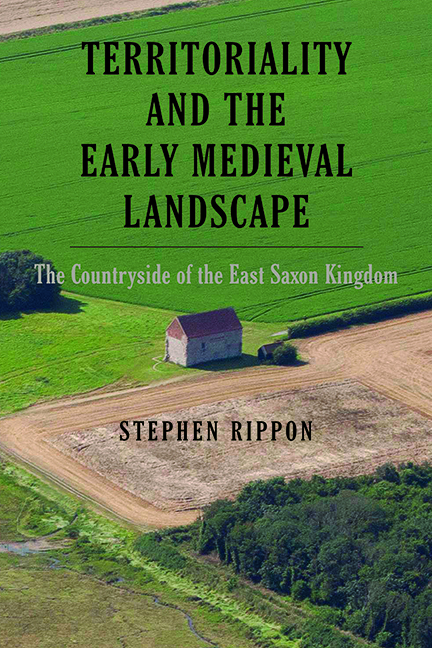Book contents
- Frontmatter
- Dedication
- Contents
- List of Illustrations
- List of tables
- List of Abbreviations
- Acknowledgements
- Glossary
- Preface
- Part I Background
- Part II The Early Folk Territories
- Part III Discussion and Analysis
- Appendix 1 Domesday Population Densities Across the ‘Rochford Peninsula’ Early Folk Territory
- Appendix 2 Sites Used in the Analysis of Animal Bone Assemblages
- Appendix 3 Sites Used in the Analysis of Charred Cereal Assemblages
- Bibliography
- Index
- Garden and Landscape History
Chapter 9 - Another British Domain: The Northern Claylands
Published online by Cambridge University Press: 26 May 2022
- Frontmatter
- Dedication
- Contents
- List of Illustrations
- List of tables
- List of Abbreviations
- Acknowledgements
- Glossary
- Preface
- Part I Background
- Part II The Early Folk Territories
- Part III Discussion and Analysis
- Appendix 1 Domesday Population Densities Across the ‘Rochford Peninsula’ Early Folk Territory
- Appendix 2 Sites Used in the Analysis of Animal Bone Assemblages
- Appendix 3 Sites Used in the Analysis of Charred Cereal Assemblages
- Bibliography
- Index
- Garden and Landscape History
Summary
CHAPTER 8 SHOWED HOW the landscape of central Essex was divided up into a series of valley-based early folk territories that were very similar in character to those in southern and eastern districts, suggesting that early folk territories were both an Anglo-Saxon and a British phenomenon. To the north of these central Essex claylands lay the High Boulder Clay Plateau of northern Essex and south-western Suffolk, drained by the rivers Colne and Stour. Here it has proved more difficult to reconstruct early folk territories despite using the same sources and techniques that worked so well further south (and, indeed, as we will see in Chapters 10 and 11, to the west and to the north). While there are numerous linked place-names and detached parcels, very few breaks in this web of territorial connections could be detected across the whole of the Colne and Stour valleys. Indeed, some of the territorial connections and linked placenames cut across the river Stour that later marked the county boundary between Essex and Suffolk. The obvious conclusion is that this was a single – albeit very large – early folk territory that by Domesday was divided into Lexden, Hinckford and Freshwell Hundreds in Essex and Risbridge and Babergh Hundreds in Suffolk. To the east lay a separate early folk territory that was to become the Domesday hundreds of Samford and Cosford (Figures 9.1 and 9.2).
THE COLNE AND STOUR VALLEYS
KEY INFORMATION
Possible folk name: ?
Royal vill(s): Clare, Sudbury/Long Melford, Bures, Nayland
Minster church(s): Stoke-by-Clare, Sudbury/Long Melford, Stoke-by-Nayland
Possible meeting place: Thunderlow
Great estates (into which it fragmented): ‘greater Clare’, ‘greater Sudbury’, ‘greater Bures’, ‘greater Nayland’
Area: 1,149km2
Successor hundreds: Lexden, Hinckford and Freshwell Hundreds in Essex, and Risbridge and Babergh Hundreds in Suffolk
Central northern Essex: Lexden, Hinckford and Freshwell Hundreds
In northern Essex the hundred boundaries appear to have been tenth-century creations that bore little relationship to the earlier territorial geography, often cutting through parishes with linked names and which were presumably once a single vill.
- Type
- Chapter
- Information
- Territoriality and the Early Medieval LandscapeThe Countryside of the East Saxon Kingdom, pp. 197 - 204Publisher: Boydell & BrewerPrint publication year: 2022

